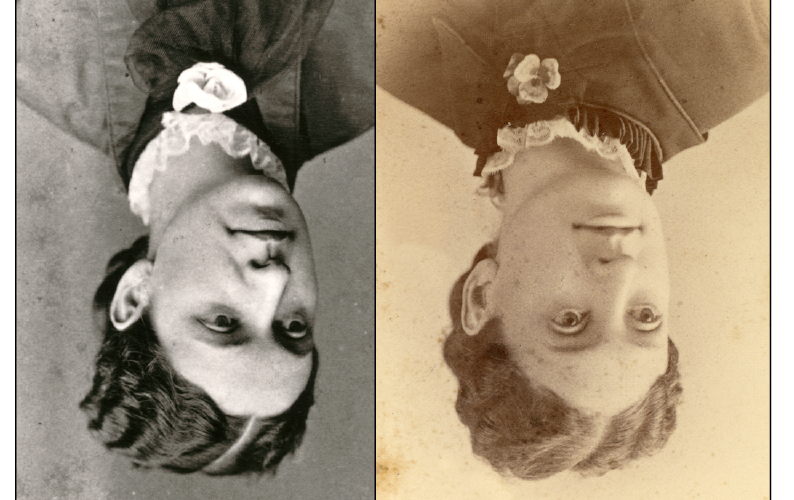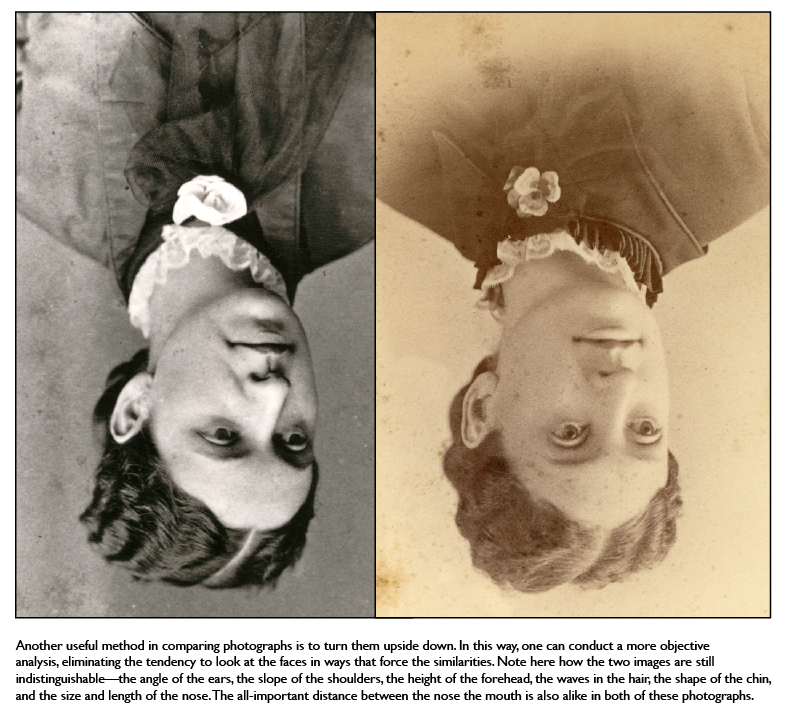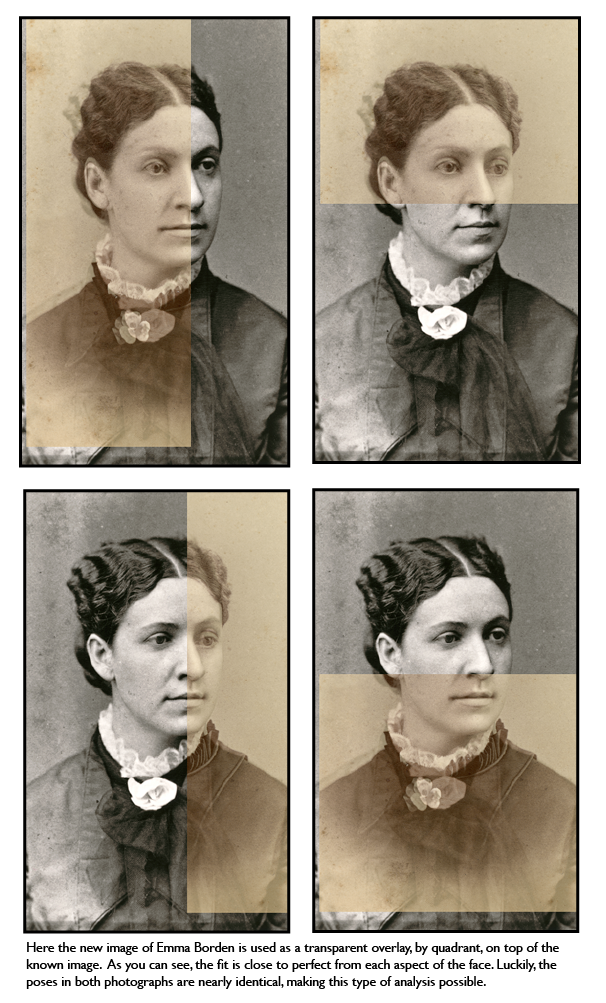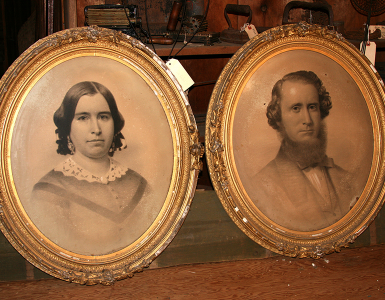by Stefani Koorey, PhD
First published in November/December, 2008, Volume 5, Issue 4, The Hatchet: Journal of Lizzie Borden Studies.
Through our indefatigable focus on pioneering scholarship and cutting-edge investigations into the hitherto uncharted realms of the Borden murders of 1892, Fall River history, and Victorian America, The Hatchet has already unearthed a considerable amount of groundbreaking artifacts, ephemera, documents, photographs, and data.
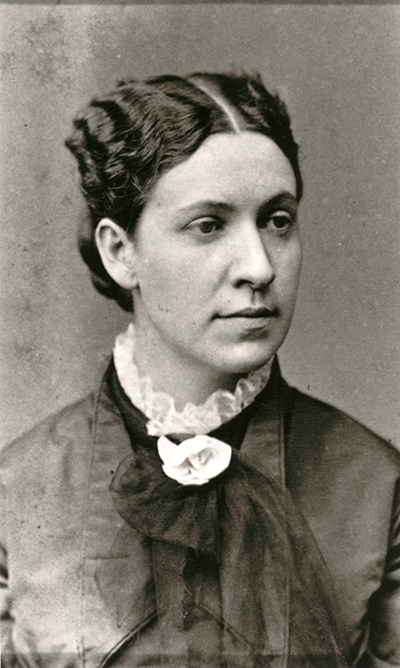

From the previously unidentified portrait photographs of Andrew and Sarah Borden, found unceremoniously leaning against a wall under a dusty shelf in the book room at Luther’s Museum in Swansea, Massachusetts, to the substantial cache of Emma Borden owned books, mementos, scrapbooks, and photo albums, held unbeknownst to the curator by the Swansea Historical Society, to the significant discovery of the unknown image of Lizzie Borden as a child (found in collaboration with author Len Rebello), The Hatchet has endeavored to bring to light objects of historical importance and interest.
With luck, our quest will prove never-ending, as archives and family collections are located and opened for serious examination and study.
To that end, we are pleased to present to our readers, and the world, a new look at Lizzie Borden’s older sister—from a recently acquired image of Emma, recorded in the prime of her young life.
According to the photographer’s imprint on its reverse, the carte-de-visite (CDV) of Emma Borden was photographed at the Melville Sumner studio, when it was located at 5 S. Main Street, Fall River, Massachusetts.
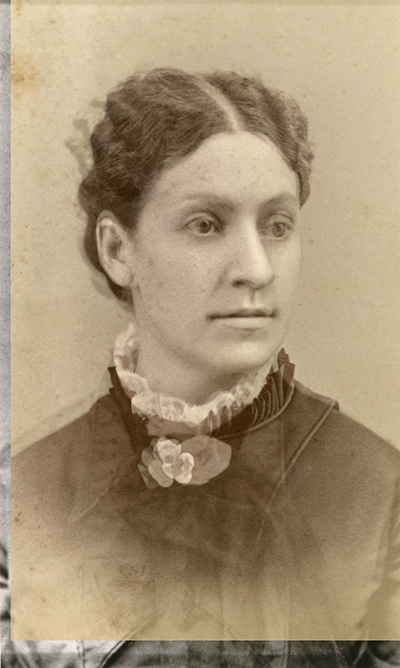
A careful search of Fall River city directories shows that the Sumner studio was in operation at this address for only a short time, from 1874 to 1876. City directories were published the year following the data collection, so this span of years might include part of 1873 and 1877.
City directories were not published for Fall River in the years 1877 and 1879, but we know that by the 1878 listing the Sumner studio’s address had changed to 48 S. Main Street. A search of the 1880 directory confirms that Sumner was still at his new number.
This research would seem to indicate that the date of this new image is from 1873 to 1877, or when Emma, who was born in 1851, was twenty-two to twenty-six years old.
Sumner’s imprint contains several fancy fonts with a few curlicues in between, filling up a third of the back of the card in the center. This style of imprint dates the card from 1870 and later. The pastel pink color of the card stock on which the photo is affixed likewise dates the image to 1873-1910.
The only known image of Emma Borden as an adult comes to us from the collection of the Fall River Historical Society. It is undated and the photograph has been archivally framed, so access to the reverse of the card, where the photographer’s name and address is located, is unavailable to us. Michael Martins, curator of the Fall River Historical Society, feels that the known image dates from the 1880s, but cannot state, for certain, the year of its creation.
The new image appears to be a more youthful Emma, to be sure, but just how much younger is open to conjecture. Is she as much as ten years younger? Or, can there be but a few years between the two images?
This new image is an albumen print, popular from 1855 until 1920. Albumen is the white of a hen’s egg and this binding agent was the most common form of print material in the 19th century. The image shows signs of fading and a yellowish-brown discoloration, both of which are hallmarks of the albumen print. Using 30X magnification, the paper fibers are visible through the binder in the highlights.
We are extremely lucky that both the known and the new portraits were posed in the same manner and that the faces were turned in almost exactly the same direction. While we do not get to see Emma Borden full-faced, because of their similar pose, we are able to more accurately compare these two images and confirm their likeness using the standards of facial analysis, which compares distances between the ears and eyes, the nose and mouth, the chin and nose, and the eye to eye.
With so many new images of the Borden family being discovered by The Hatchet, let us hope it is not too much longer before we are able to see family snapshots of Emma and Lizzie in their later years—when home photography had become a popular pastime. After all, Kodak introduced the $1 Brownie camera in 1900!


